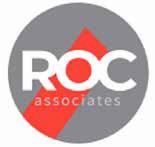Automated Ordering: The Gift You Get When You’re Doing Everything Else Right
Many retailers aspire to increase automation in their supply chain, and automated ordering is often one of the most sought after goals. However, many retailers fail to realize that automated ordering cannot succeed unless the fundamental best practices of perpetual inventory are being executed. As I always say, “Automated Ordering isn’t something you can just turn on. It’s the gift you get when you’re doing everything else right.”
Automated Ordering: Foundations First
In order to implement and achieve the highest ROI possible, a good foundation is a must. This includes having accurate POS/Sales data and putting into place technology and operational best practices to maintain an accurate perpetual item-level inventory. Automated ordering is not a silver bullet for your inventory — it’s the reward for operational excellence at all levels. Your marketing and pricebook teams must be vigilant in their communication and timely maintenance of supplier and item data. Likewise, your store level personnel must accurately document all inventory activity including deliveries and returns, counts, waste, and more.
Of course, quickly following this is the critical step of choosing the right tool for forecasting. There are several options in the marketplace, including tools that can incorporate artificial intelligence and machine learning into the predictive ordering algorithm. Carefully evaluating and selecting the right tool and team to implement is critical to make sure that you can achieve success. Given the impact that this has on your organization, you want to get this right on the first attempt.
Last but certainly not least, having executive sponsorship and a strong change management strategy is crucial for adoption by all levels of the organization.
Implementation Guidelines
Okay, now that we have the foundations down, let’s take a look at the implementation which should follow a ready, set, go model.
Get ready!
Prepare by making sure both your systems and your people are ready for the journey on which you are about to embark. Is your current inventory management system ready to handle all necessary integration points? If not, you’ll need to address that first. You should also determine and define your key metrics for success (out of stocks, labor hours, inventory turns, etc.) and establish baselines for each so that you can measure post-implementation improvement. This is also the time to create your training and change management approach, ensuring you have buy-in and input from store personnel on new process changes that will result. Finally, you will also need to do some legwork to select a good pilot location and the supplier who will be best suited to work with you to implement automated ordering.
Set!
After setting target goals for each of the key metrics you defined in the previous step and choosing a pilot store and supplier, you will then execute a pilot for the category that represents the top 10% of stock movement. Next, you can make a plan to gradually expand to the top 20% of items, then 40%, and so on. As you expand to each category, you will set your min/max stock quantities and evaluate forecast accuracy. This approach allows you to monitor the quality of the forecasting, without over ordering. Your store managers can review orders, validate that items and quantities are correct, and then submit the order. This stage of the implementation is also a great time to set quality and accuracy standards for your suppliers and ensure the complete end-to-end business process is aligned with your technology. After all, if your orders are accurate but your suppliers routinely fail to deliver the accurate products and quantities, it will skew the results.
Go!
Once you have validated your data and processes in a pilot location, you can take the next step and expand to more stores, categories, and suppliers. As the pilot is transitioned to roll-out, the execution of your communication and change management plan is key. You should now have quantifiable data that can be shared with the field–including time/labor savings and reduction in out of stocks. This will help build trust and excitement with your team to ensure smooth adoption. You will also need to engage in continuous improvement by monitoring certain key metrics such as forecast accuracy and supplier performance (delivered quantity vs. ordered quantity).
Realize the Benefits
What if you could reduce on-hand inventory by millions…and still drive increased sales?
When Automated Ordering is implemented properly, retailers will see reductions in out of stocks, elimination of excess inventory by 25- 40%, and elimination of late orders– all while driving increased sales. It will also free up your store staff to focus on more customer-facing activities. In some studies, time spent preparing orders can be reduced by up to 80%, allowing store managers to focus on other areas of the store.
Are you getting the most out of your existing inventory system? Are your systems and business processes set up for optimal forecasting and stocking of merchandise? Are your people motivated and trained to get this critical process flow right? Are you interested in software and integration tools that would enhance the capabilities of your existing systems? Or are you already considering a new inventory system selection process?
Call us for a free one-hour evaluation where we can discuss your goals and the steps we can take to find and implement the right fit for your business. Our experts have designed, built and implemented advanced inventory systems for dozens of forward-thinking, Fortune 1000 retailers around the globe. We can tailor the ideal solution your business needs.

